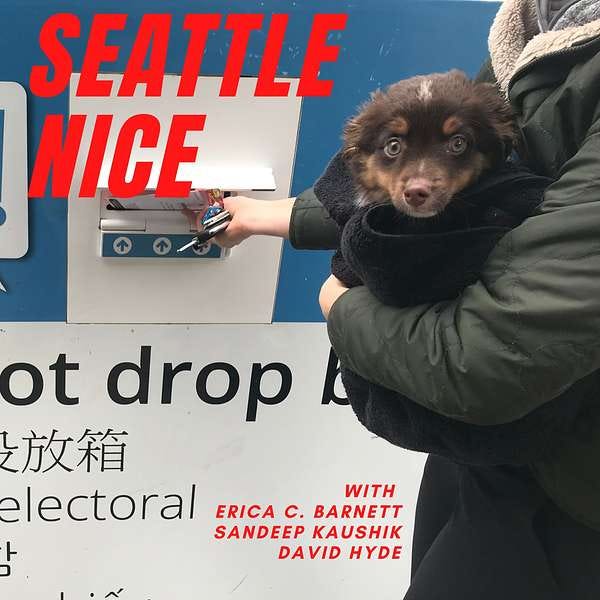Seattle Nice: Seattle Solved All the Crime, So We're Talking About Graffiti
Also: A new poll tests whether voters will believe Katie Wilson is the second coming of Kshama Sawant.
By Erica C. Barnett
Because there are no other public-safety issues in the city of Seattle, our main topic on Seattle Nice this week is one of the mayor and council's top current priorities: Cracking down on graffiti— already a crime!—with a new law imposing a per-tag fine that's higher than the ones for animal cruelty or (and I know people really feel strongly about this one) cutting down trees.
Proponents on the council, echoing Republican City Attorney Ann Davison, argue that statistical data shows that the most prolific graffiti artists and taggers are white, middle-class men with plenty of money to pay for attorneys or fines—yet for whom, they also claim, the new fines will be an effective deterrent.
I pointed out that their "data" is based on a statistically insignificant sample, ranging from several dozen people (for the city's race and gender breakdown) to a majority 17 individuals (for the purported income data.) David argued that these statistics are still valid, and that I believe we should "only use demographic data when it's politically convenient." And Sandeep agreed with me that we shouldn't use fake stats to justify new crackdowns, but for a different reason—he said talking about the racial demographics of taggers at all is a kind of "identitarian" (i.e. woke) policy that the city should stay away from in general.
For the record, I do think it's ridiculous that the city is trying so hard to prove that Seattle's graffiti artists and taggers don't slot easily into stereotypes, but I also think we shouldn't be spending so many resources ensuring Seattle's walls remain bare and gray. I actually think both my co-hosts agree with me about this. As much as Sandeep likes to cite statistics from unknown stories that, according to him, prove that the broadly discredited "broken windows" theory works to deter crime, he had to admit that he doesn't really consider graffiti a top public-safety priority.
We also talked about a new pro-Bruce Harrell message testing poll that attempts to sell the idea that mayoral candidate Katie Wilson is the second coming of Kshama Sawant. Even Sandeep—who usually leaps at a chance to tie progressive candidates to the former city council member, who left the council more than a year and a half ago—agreed that it's ridiculous to paint the thoughtful, wonkish Wilson as abrasive, politically conniving, and "loud," but don't be surprised if you receive a mailer this fall showing Wilson and Sawant Photoshopped together like they're running on the same ticket.






Kshama Sawant would probably appreciate being tied to Rob Saka just to add some weight to his sinking ship. Or better yet, as ai describes, "Mayor Bruce Harrell and City Councilmember Rob Saka are key allies in Seattle's city government, often collaborating on initiatives to address urban challenges."
The idea that we should only crack down on certain categories of crime when the perpetrators are white is ridiculous to begin with, regardless of whether the data supports such demographic assertions